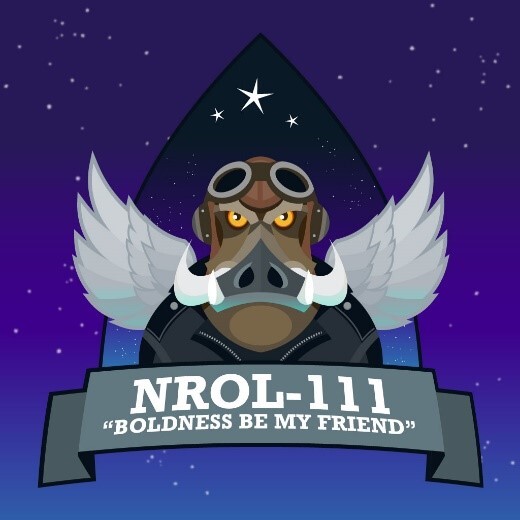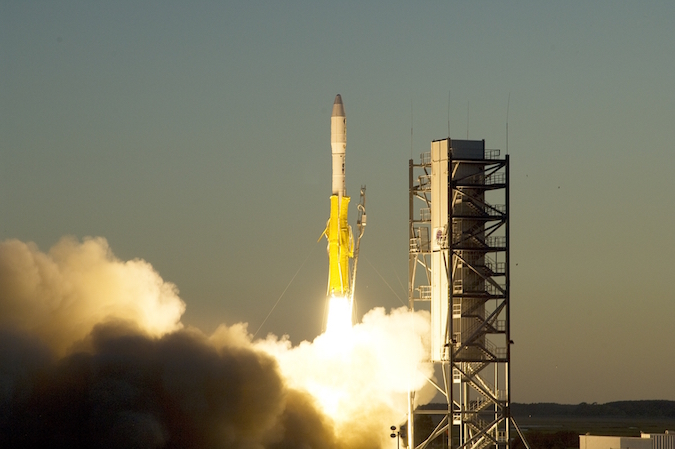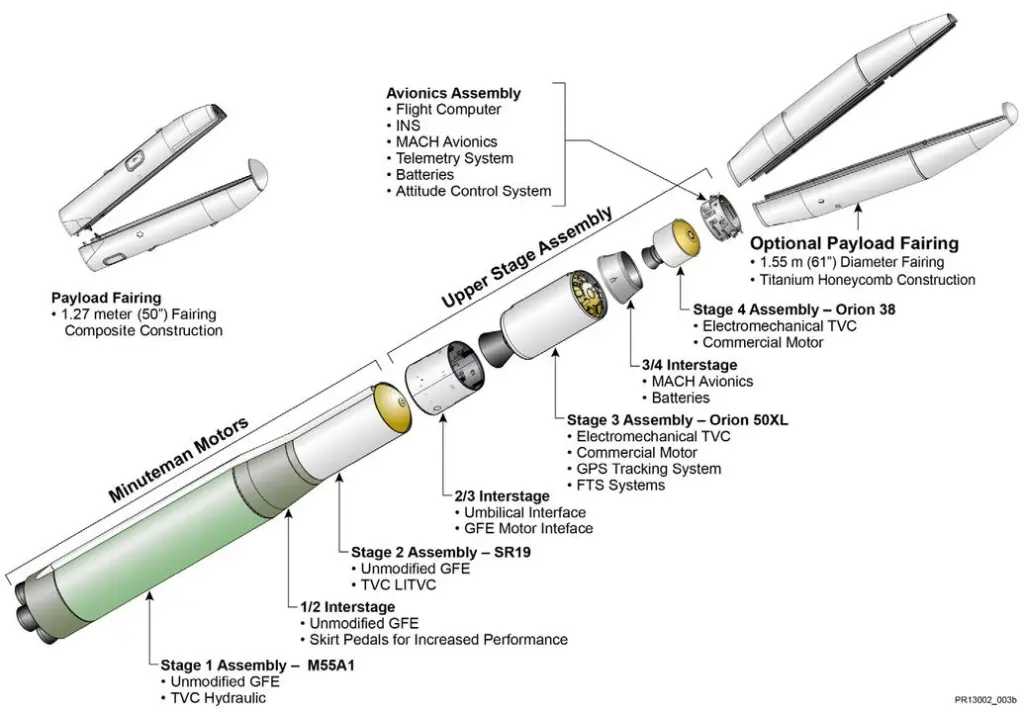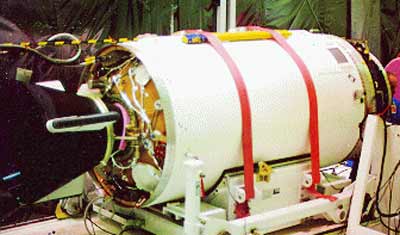Featured Image: NASA/Wallops Flight Facility
Lift Off Time | June 15, 2021 – 13:35 UTC | 09:35 EDT |
|---|---|
Mission Name | NROL-111 |
Launch Provider | Northrop Grumman |
Customer | National Reconnaissance Office (NRO) |
Rocket | Minotaur I Space Launch Vehicle (SLV) |
Launch Location | LP-0B, Wallops Flight Facility, Virginia, USA |
Payload mass | Due to the classified nature of this payload, no payload mass can be specified |
Where did the satellites go? | Low Earth Orbit (LEO) |
Did they attempt to recover the first stage? | No, this is not a capability of Northrop Grumman |
Where did the first stage land? | It crashed downrange in the Atlantic Ocean |
Did they attempt to recover the fairings? | No, this is not a capability of Northrop Grumman |
Were these fairings new? | Yes |
How was the weather? | Slightly hazy and partly cloudy |
This was the: | – 12th Minotaur I launch – 1st launch from Wallops this year – 2nd launch for the NRO of 2021 – 54th orbital launch attempt (52nd successful launch) of 2021 |
Where to watch | Official replay |
How did it go?
The National Reconnaissance Office (NRO) successfully launched the Northrop Grumman Minotaur I Space Launch Vehicle (SLV) carrying their next NROL satellites, NROL-111. The Minotaur rocket with the NROL-111 payload launched from Launch Pad-0B at Wallops Flight Facility, Virginia, USA, and traveled to a low-Earth orbit (LEO). Due to the classified nature of this mission the exact payload mass and its orbital parameters are unavailable to the public. With a solid-fueled first stage, Minotaur I sped off the pad. It broke through the speed of sound only 17 seconds into flight.

What is NROL-111?
There is no publicly available information regarding the specifications of the NROL-111 payload or its mission. In the past, most NROL satellites have had similar purposes. These purposes include surveillance and reconnaissance for the United States, as well as the testing of new and advanced technology. The low payload mass capability of the Minotaur I rocket suggests that the NROL-111 payload must be smaller and lighter than most NRO payloads launched on Falcon 9 and Delta IV Heavy rockets.

What is the Minotaur I Space Launch Vehicle?
Minotaur I is an American-made, all-solid rocket motor launch vehicle, which was developed for the U.S. Air Force’s Orbital/Suborbital Program (OSP). It originates from the early Intercontinental Ballistic Missiles (ICBMs) since it uses variants of the Minuteman solid rocket motors. This was the 12th flight of a Minotaur I SLV, which continued its 100% success rate. Minotaur I has had a long flight history dating back to its first flight in early 2000 and its most recent flight in late 2013. The Minotaur I rocket has the capability to lift 580 kg (1200 lb) to a 185 km low Earth orbit (LEO).

Sometimes called the banana-peel rocket, Minotaur I has a yellow thermal blanket that peels off like a banana just after liftoff. The thermal blanket is attached to ground support equipment and the launch tower via guidelines. When Minotaur I launches, the thermal blanket is peeled off the side since it is secured to the solid ground structures. The thermal protection blanket is needed because Minotaur normally launches in a silo, where the climate can be controlled.

First Stage
The first stage of the Minotaur I launch vehicle is the M55A1 stage, which uses the Thiokol solid rocket engine. The Thiokol engine can produce 792 kN (178,048 lbf) of thrust and has a burn time of just 59 seconds. This is the partial reason why the Minotaur I SLV has more than the typical two to three stages seen on modern conventional rockets. The stage stands 7.50 m (24.60 ft) tall and is only 1.68 m (5.51 ft) in diameter.
Second Stage
Minotaur I uses the SR19 second stage, which was also used on Minuteman rockets in the early 1950s. The SR19 hosts a motor that can produce 267.70 kN (60,181 lbf) of thrust and can burn for 66 seconds; slightly longer than the first stage. The second stage has a height of 4.12 m (13.51 ft) and is 1.33 m (4.36 ft) wide. There is a small, slanted interstage which connects the first and second stage.

Third Stage
The third stage used on the Minotaur I rocket is the Orion-50XL. It stems from the Orion-50 family of vacuum optimized solid rocket propellant upper stages. In a vacuum, the Orion-50XL can produce 160.10 kN (36,000 lbf) of thrust with a burn time of 70.1 seconds.
Fourth Stage
The final stage on the Minotaur I launch vehicle before the fifth stage is the Orion 38 fourth stage. Orion 38 is a smaller 900 kg (1900 lb) vacuum optimized upper stage used on various Minotaur vehicles. It has a thrust of just 34.31 kN (7,700 lbf) in a vacuum and a burn time of 63.8 seconds.

Optional Fifth Stage
Minotaur I has the option of a fifth stage for more precise velocity trims and multiple payload deployments. This fifth stage is known as the HAPS stage. HAPS is a liquid hydrazine-fueled rocket stage which is commonly used on the air-launched Pegasus vehicle.





